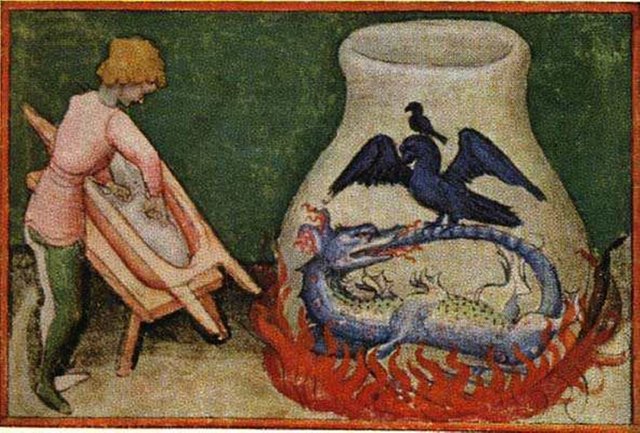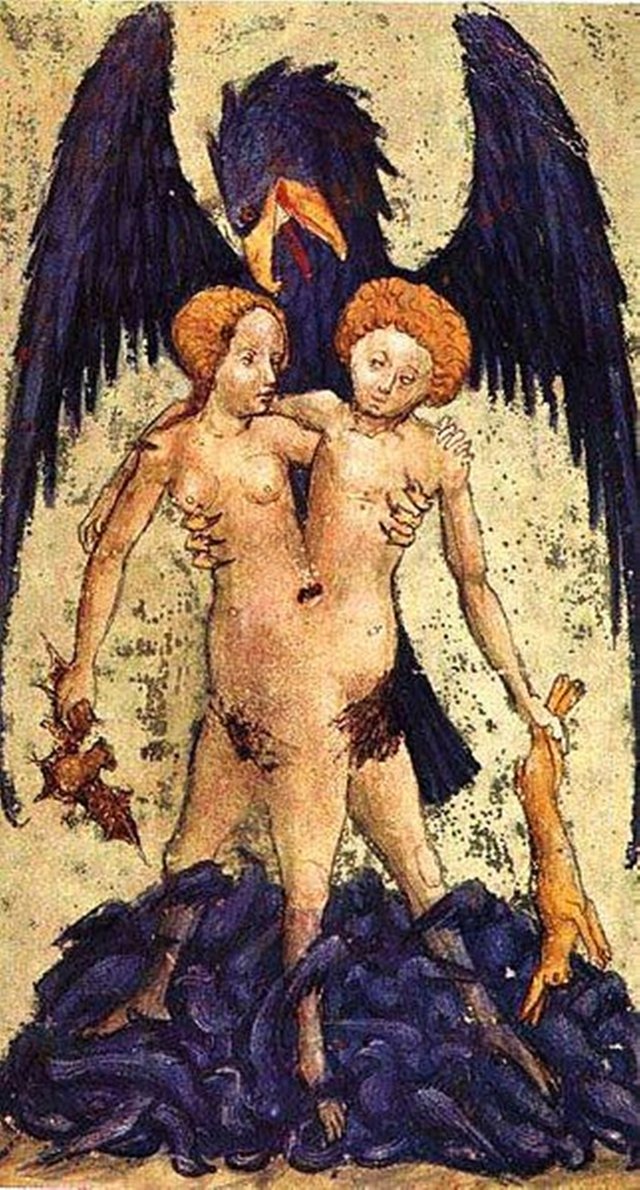The strange book Aurora Consurgens of Thomas Aquinas
The Aurora consurgens is an alchemical treatise of the 15th century famous for the rich illuminations that accompany it. While the text was in the past sometimes attributed to Thomas Aquinas, its author is now more commonly referred to as "Pseudo-Aquinas".

Aurora consurgens is a commentary on the Latin translation of Silvery Waters by Senior Zadith (Ibn Umayl). Unusual for a work of this type, the text is accompanied by about thirty-seven fine miniatures in watercolour. The illustrations are allegorical representations of alchemical elements depicted in human or animal form. For example, mercury is depicted as a serpent, gold as the sun and silver as the moon. These illustrations incorporate some of the earliest Greek alchemical symbols known, found in the Authentic Memoirs of Zosimos of Panopolis.
The visuals found in Aurora consurgens show alchemical metaphors that relate to human and animal procreation, procedures like calcination and putrefaction and other motifs. The manuscript also contains pictorial metaphors combined with glass vessels which depict the stages of the alchemical art of transformation. There are other metaphors found throughout the manuscript that are used in conjunction to create chains of metaphors. Some examples of this include cosmological and philosophical principles of the concepts like "two are one" and "nature vanquishes nature". Another illustration combines the motifs of Mercury decapitating the sun and the moon with a vase filled with silver and gold flowers. Another depicts two birds holding each other in a way that forms a circle which also symbolizes "two in one".

This exemplifies the cosmic principle of unity, shown metaphorically as the dragon biting its tail. The ouroboros biting its tail has been stylized into a medallion of three concentric circles with inscriptions referring to the unity of everything and two natures attracting and dominating each other. It is associated with the symbols of the sun, moon, mercury, and sulfur. Another example includes the eagle and the dragon, which represent mercury as a volatile and as a solidified substance, respectively. Further, the unification of the opposite principles female/male, passive/active, cold/hot, moist/dry finds expression in the coupling of the sun and the moon, a cosmological motif of central importance since it symbolizes the generation of all things.
The representation of sexuality within these images also provides many points of comparison. The lovemaking of King and Queen in the Rosarium philosophorum series is derived from scenes in the Aurora consurgens and the Donum Dei series.
Many patrons were interested in aesthetic and poetic contemplation and also in gaining the knowledge to perform alchemy. Aurora consurgens addresses all of the factors, implying it is directed to aristocratic and noble patrons. Some of these patrons include the margrave of Brandenburg and Barbara of Cilli, the wife of the emperor Sigismund.
comment pruned due to size